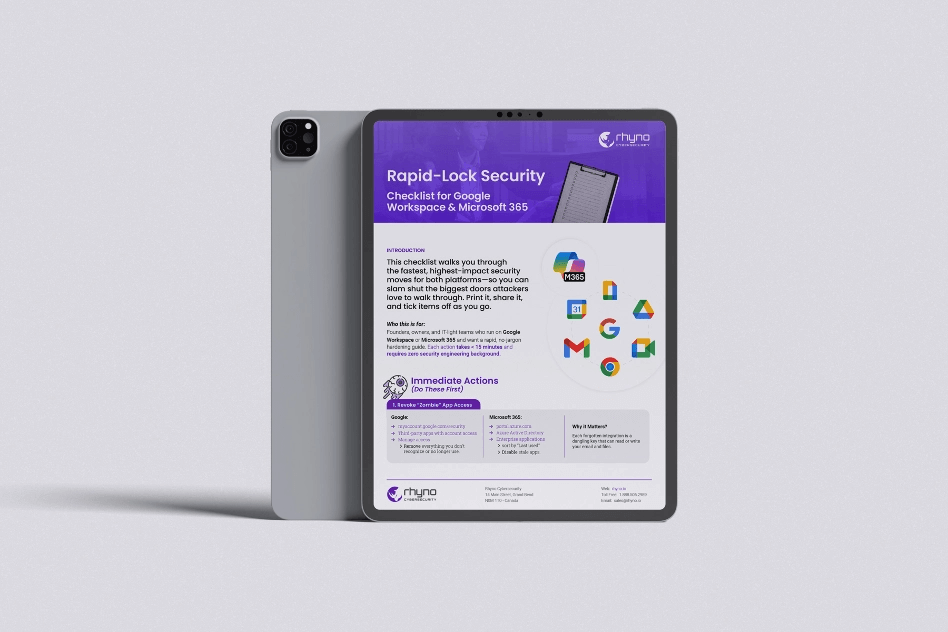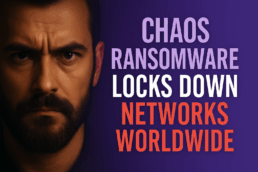Chaos Ransomware Sparks Corporate Lockdowns Worldwide
A Rapid Rise from the Ashes
When a fresh extortion crew calling itself Chaos Ransomware burst onto the scene in February 2025, security analysts noticed an all‑too‑familiar playbook. The group arrived just weeks after law‑enforcement agencies yanked the dark‑web infrastructure used by the notorious BlackSuit gang offline. Almost immediately, Chaos began announcing high‑profile breaches, demanding six‑figure payments and promising victims “full system recovery” plus a forensic breakdown of how the break‑in succeeded—if they paid the asking price of roughly $300,000. Investigators quickly suspected that former BlackSuit operators—already veterans of Royal and Conti campaigns—had resurfaced under a new banner. Their timing and tactics suggested a deliberate attempt to re‑establish a revenue stream before the market forgot their name.
Sophisticated Entry Tactics
Chaos relies on social engineering at scale. The first wave is a spam deluge designed to thin out an organization’s defenses with noise. Next comes an unexpected phone call from a polished English‑speaking “support agent” walking an employee through “remote troubleshooting.” That call ends with the victim launching Microsoft Quick Assist or a similar remote desktop program, effectively handing attackers an Admin key. Once inside, Chaos deploys a carousel of legitimate remote‑management suites—AnyDesk, ScreenConnect, OptiTune, Syncro RMM, Splashtop—so they can cling to the network even if one foothold is closed. Logs vanish, PowerShell history is scrubbed, and endpoint protection tools disappear without a trace, leaving administrators blind to the unfolding breach.
Relentless Encryption Strategy
The malware itself is written to hurt—and to hurt fast. A multithreaded engine races across local drives and mapped network shares, encrypting only fragments of large files so business‑critical data becomes unreadable in minutes rather than hours. Recovery partitions, shadow copies, and backup catalogs are wiped to ensure that restoring from an image is almost impossible. While the encryption routine runs, a parallel process siphons documents through GoodSync or comparable file‑transfer utilities, placing stolen data on hidden servers for later blackmail. In a final flourish, the ransomware taunts incident‑response teams by refusing to run in popular sandbox environments, terminating if it detects a debugger or virtual machine.
Signs of a Familiar Hand
Analysts at Cisco Talos point out that Chaos reuses many of BlackSuit’s trademarks: the same command‑line switches control which file types are encrypted, the ransom note follows an identical structure, and the choice of remote‑management software mirrors older Royal campaigns. Even the wording—offering a “step‑by‑step post‑mortem” for a price—echoes language seen in past Conti extortions. That overlap, combined with the abrupt seizure of BlackSuit’s onion sites during Operation Checkmate, leaves few doubting that Chaos is simply the next costume worn by a veteran crew that has rebranded repeatedly to dodge heat.
Broader Turbulence in the Ransomware Scene
Chaos is not alone in filling the power vacuum left by takedowns. New or newly repackaged strains such as Backups, Bert, BlackFL, BQTLOCK, Dark 101, Gunra, Jackalock, Moscovium, RedFox, and Sinobi have all appeared in 2025. Conti code, leaked in 2022, still forms the spine of many of these variants: Gunra alone has listed more than a dozen victims since late April, touting strong obfuscation and an ironclad plan to publish stolen data if companies refuse to pay. Meanwhile, boutique threats like NailaoLocker arrive through DLL side‑loading, and click‑bait “CAPTCHA” pop‑ups secretly execute Epsilon Red against unsuspecting users.
Falling Numbers, Growing Danger
Paradoxically, overall ransomware incidents are dipping. NCC Group recorded 1,180 attacks published on leak sites in Q2 2025, down 43 percent from the previous quarter. Yet experts warn the lull is misleading. As Global Head of Threat Intelligence Matt Hull explains, sustained police pressure and frequent code leaks have pushed syndicates to regroup, refocus, and sharpen their social‑engineering skills instead of blasting careless phishing emails. Groups such as Qilin, Akira, Play, SafePay, and Lynx still wracked up triple‑digit victim counts in three short months—proof that the business of extortion remains brutally profitable.
Consequences for Organisations
For enterprises running Windows, Linux, ESXi, or even consumer‑grade NAS boxes, Chaos represents a sobering reminder that a seized domain does not kill a threat actor’s ambition. Seasoned attackers simply build a fresh portal, adopt a new name, and return with sharper tricks. Without layered defenses—rigorous user training, strict privilege controls, immutable backups, and continuous monitoring—companies risk grinding halts, multimillion‑dollar ransom negotiations, regulatory fines, and the long‑term cost of reputational damage. Law‑enforcement seizures and cryptocurrency forfeitures may sting criminals’ wallets, but until victims stop paying or systems grow vastly harder to breach, Chaos—and the mayhem it promises—will remain a potent force on the digital battlefield.


